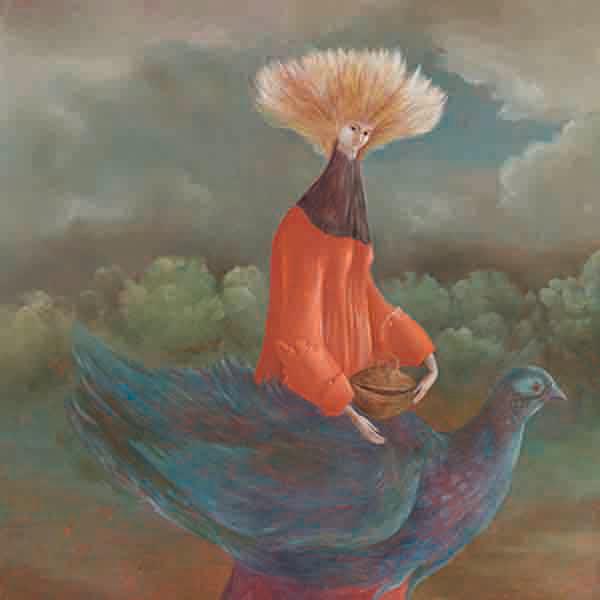
“Portrait of the Late Mrs. Partridge,” 1947. Oil on board, from the artist’s estate.
Dimensions are: 27.5″ x 40″
Image courtesy of: The Venice Biennale, photographed by: Nathan Keay
Art lovers seems to have a newfound adoration for Leonora Carrington. As of late, the Surrealist painter has been having a huge surge of international attention. With a number of prestigious exhibitions and record-setting auction sales, Carrington’s appeal only continues to grow.
Much ahead of her time, Carrington’s themes seem especially relevant in today’s age. Among the topics the artist would typically portray, feminism, gender fluidity, and concern for the environment most often dominate her canvases. Courtesy of Artsy, the academic Catriona McAra recalled, “She was so ahead of her time in her own art and writing and ideas and perspective on the world… she was such an innovator and I think people are only starting to realize that now.”
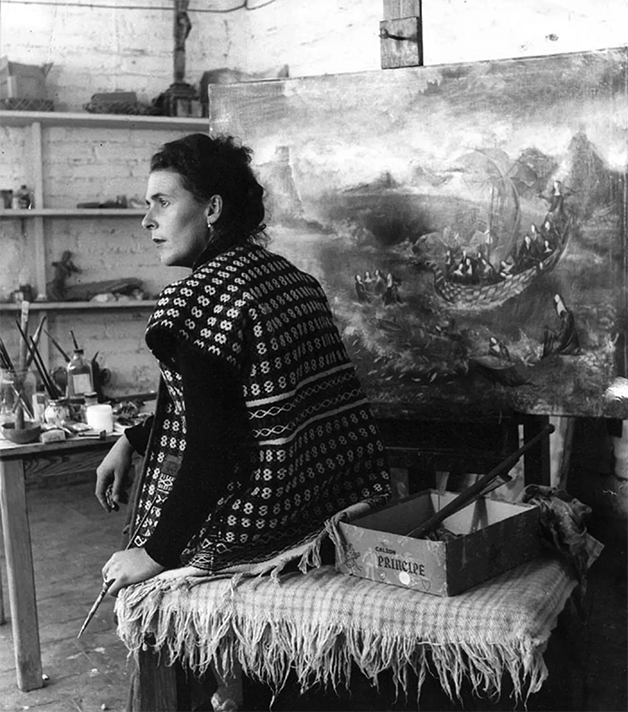
The artist…
Image courtesy of: Weinstein Gallery
Carrington was born in England in 1917; from the very beginning, she rejected the roles her parents expected her to fulfill. Rather than being a society wife, Carrington moved to London in order to study art. Before long, the artist fell in love with a much older Max Ernst, the German pioneering painter responsible for the Dada Movement and Surrealism in Europe.
However the Surrealist movement of the time was not as open to females as Carrington hoped; and rather than being a muse, she decided to move to Paris and continued constructing her own “mythological universe.” The artist was strongly influenced by the Celtic legends told repeatedly by her Irish mother. The drawing board of Carrington’s alternate realm was channeled into her early drawings and paintings. However the start of World War II meant that Carrington needed to leave England. In 1942, Carrington joined a community of female artists who had also fled Europe… it was during this time that her artwork began being populated with mystical figures and monstrous female forms in the midst of conflicts with spiritual groupings.
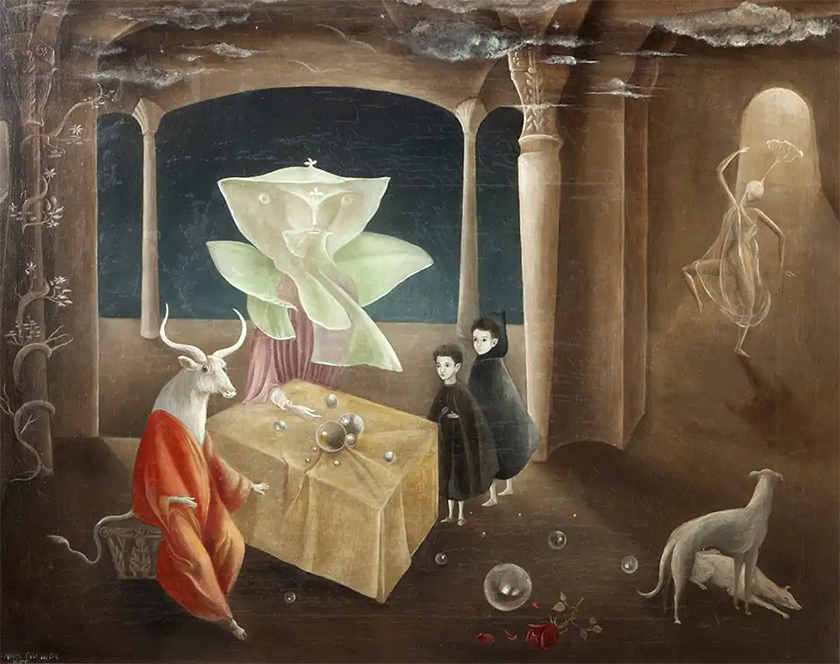
“And Then We Saw the Daughter of the Minotaur!,” 1953. Oil on canvas.
Dimensions are: 23.5″ x 27/5″
Image courtesy of: The Collector
Carrington’s feminism was a common and pivotal theme in her work; she saw female figures as the protectors of the universe. In her 1970 essay, “Female Human Animal,” Carrington was steadfast that the female race needs to challenge patriarchal authority in order for the world to survive. It is not surprising that she was instrumental in founding the first women’s liberation group in Mexico.
Even though her independence was fiercely important to Carrington, she was deeply intertwined with Ernst. When he was interned as an “enemy of the state” at the start of World War II, Carrington suffered a mental breakdown and was involuntarily confined to a Spanish asylum. By the time she was released, Ernst had married Peggy Guggenheim.
Unlike many other Surrealist painters, Carrington did not fully embrace Sigmund Freud’s theories, even though the avant-garde art movement developed alongside the psychiatrist’s findings. At the time, men typically adhered to Freud because of his ideas of male superiority; Carrington (courtesy of The Collector), “focused on exploring her own autobiography, including her personal interpretation of dreams, spirituality, sexuality, and her growing interest in alchemy and magical realism.”
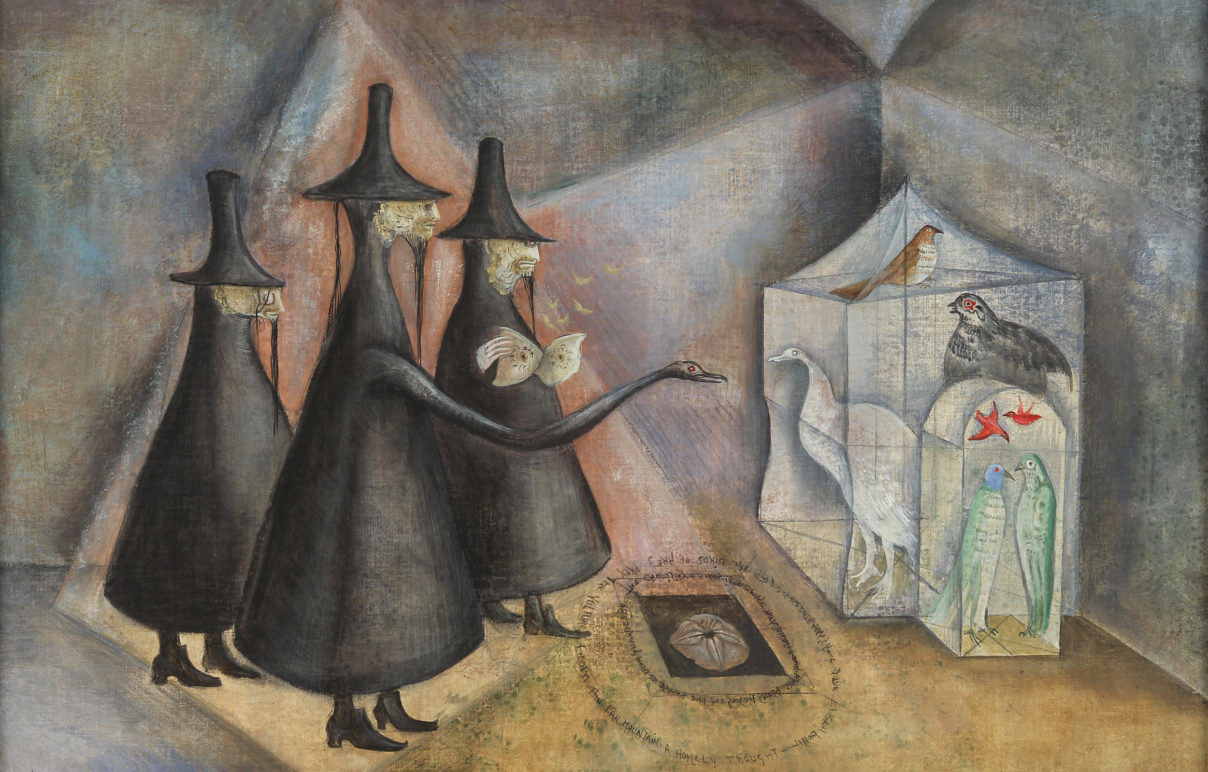
“The Burden of Burnley,” 1970. Oil on canvas.
Dimensions are: 17.5″ x 26″
Image courtesy of: Wendi Norris Gallery
It is clear that Carrington had her own style of Surrealism that resulted in “combining her fascinations with nondenominational spirituality, Surrealism, and psychoanalysis with her interest in magic realism.” Often, strange, unrecognizable creatures occupy her canvases. It is not uncommon to see terrifying minotaurs, miniature dogs, and frightening, stern female forms populating her paintings. As for Carrington’s presence, she sometimes inserted herself into her work in the form of a white horse.
Carrington’s artistry is evident in the small brushstrokes she used to build layers of paint. This high level of detail was necessary in order to properly convey her symbolic and mystical subjects. Progressive in exploring “black magic,” Carrington’s fantastical elements created dreamlike, thought-provoking scenes.
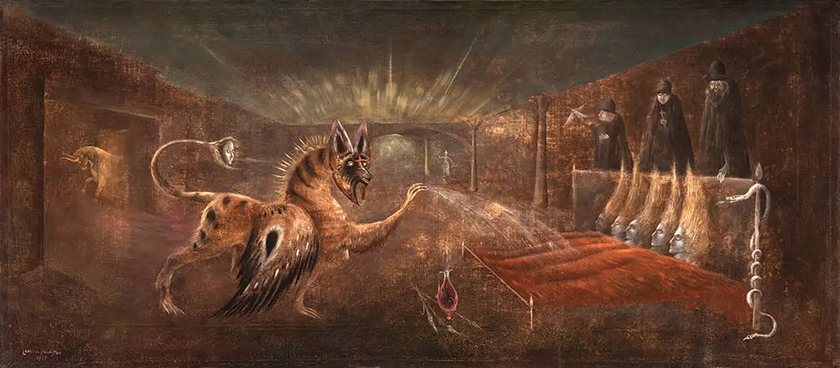
“Oink (They Shall Behold Thine Eyes),” 1959. From the Peggy Guggenheim Collection in Venice.
Image courtesy of: The Collector
Carrington spent most of her life in Mexico, moving with other Surrealists such as Benjamin Péret and his wife, Remedios Varo. The two women became good friends; perhaps in part because of their shared interest in dreams and mysticism. As Europeans, both Carrington and Varo enjoyed a freedom that was unavailable to them back at home.
Today, Carrington’s intense canvases fetch stunningly high prices at auctions throughout the world and most of the world’s top museums own and proudly display her paintings. The consummate learner and creative spirit, said this towards the end of her life, “The only thing I know, is that I don’t know.” Fair enough.